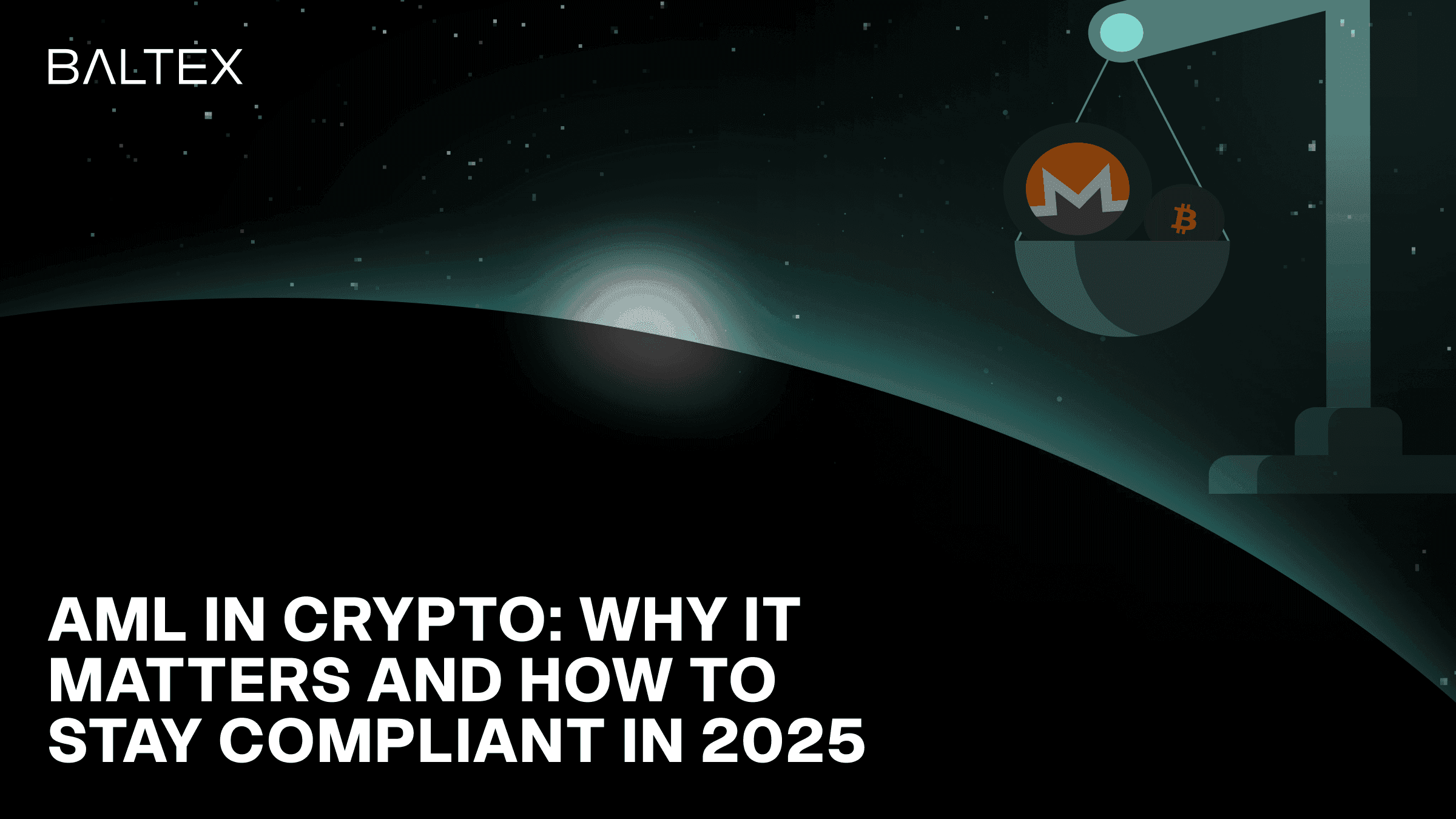AML regulation isn’t looming anymore — it’s landed. This is how it’s changing the crypto landscape, and why BaltEX already plays by the next set of rules.

It used to be a question of when. Now it’s one of how.
AML in crypto isn’t theoretical in 2025 — it’s tactical. Governments, regulators, and cross-border frameworks have pushed past recommendations and moved into implementation. The FATF Travel Rule is active in dozens of countries. MiCA regulation is fully operational in the EU. The U.S. is closing in on wallet-level oversight, with new reporting requirements targeting even non-custodial interactions.
What the industry got instead of soft guidance was real enforcement — fines, restrictions, and delistings. And platforms that once coasted under the radar are finding that visibility cuts both ways.
There’s a shift happening: AML isn’t about crime prevention anymore — it’s about platform viability.
Let’s set the scene. A user receives a large transfer from an unknown wallet. That wallet has ties to a phishing campaign. The funds get swapped on an exchange without screening. Days later, the user is locked out, and the platform faces scrutiny from banking partners.
That’s not a regulatory “maybe.” It’s an operational failure — one that undermines trust, liquidity, and long-term business.
Still, that kind of exposure isn’t obvious until it’s too late. Which is why the smart platforms are making AML part of the infrastructure — not just the paperwork.
Some exchanges are still weighing how to respond to tightening regulations. BaltEX built for it.
Two key systems are already live: Trust Layer and Private Exchange. And together, they create a functional model for what AML integration should look like in a decentralized world — not reactive, not centralized, but quietly capable.
BaltEX doesn’t treat AML as a checkbox. The Trust Layer is real-time protection baked into the deposit flow. Every transaction is scanned as it arrives — before it enters the user’s balance.
It checks for:
What users got instead of blind deposits is a visible, automated barrier between their wallet and the risks others missed. No frozen funds after the fact. No retroactive panic. Just real screening, up front.
That’s how you avoid regulatory heat — and avoid dragging users into it.
BaltEX didn’t try to balance privacy and compliance. It built both — and made them work together.
The Private Exchange, already live, allows users to swap assets across chains without accounts, KYC, or custodial risk. But unlike many “privacy-first” tools, it doesn’t ignore compliance — it routes trades through infrastructure already connected to the Trust Layer.
So while the front end stays clean — no logs, no history, no tracking — the backend handles risk automatically. The implication is clear: you can trade discreetly without putting yourself or your assets in jeopardy.
This isn’t old-school crypto privacy. It’s modular, intentional confidentiality, supported by systems that keep users out of trouble — not in the dark.
Set to launch in Q3 2025, AML Check will extend that infrastructure even further — giving users on-demand tools to score wallets, assess counterparty risk, and make informed decisions before initiating a swap.
No friction, no overreach. Just clean signals. That’s the model: decentralized, compliant, quiet.
What that unlocks is scale. Institutional users. New jurisdictions. Deeper integrations. Because when risk is visible and manageable, liquidity can actually move.
Let’s break it down. BaltEX didn’t just talk about what’s coming — it shipped:
What this stack enables is simple: compliance without compromise. Privacy without risk.
AML isn’t an edge case anymore — it’s core infrastructure. And the platforms still treating it as an afterthought are going to learn that the hard way.
What BaltEX built is a blueprint for how this can actually work: real privacy, proactive screening, optional but effective AML logic. No sales pitch, no compromise. Just quiet resilience — and tools that make regulation survivable and invisible.
The question isn’t “will crypto be regulated?” — we already know the answer.
The question is: what’s your platform built to handle — today, and next?
Keywords: AML in crypto, crypto AML 2025, anti-money laundering crypto, FATF Travel Rule crypto, MiCA regulation crypto, crypto compliance platform, decentralized AML tools, Trust Layer crypto, Private Exchange no KYC, secure crypto swaps, non-custodial crypto exchange, AML check crypto, BaltEX roadmap, cross-chain AML tools, privacy and compliance crypto